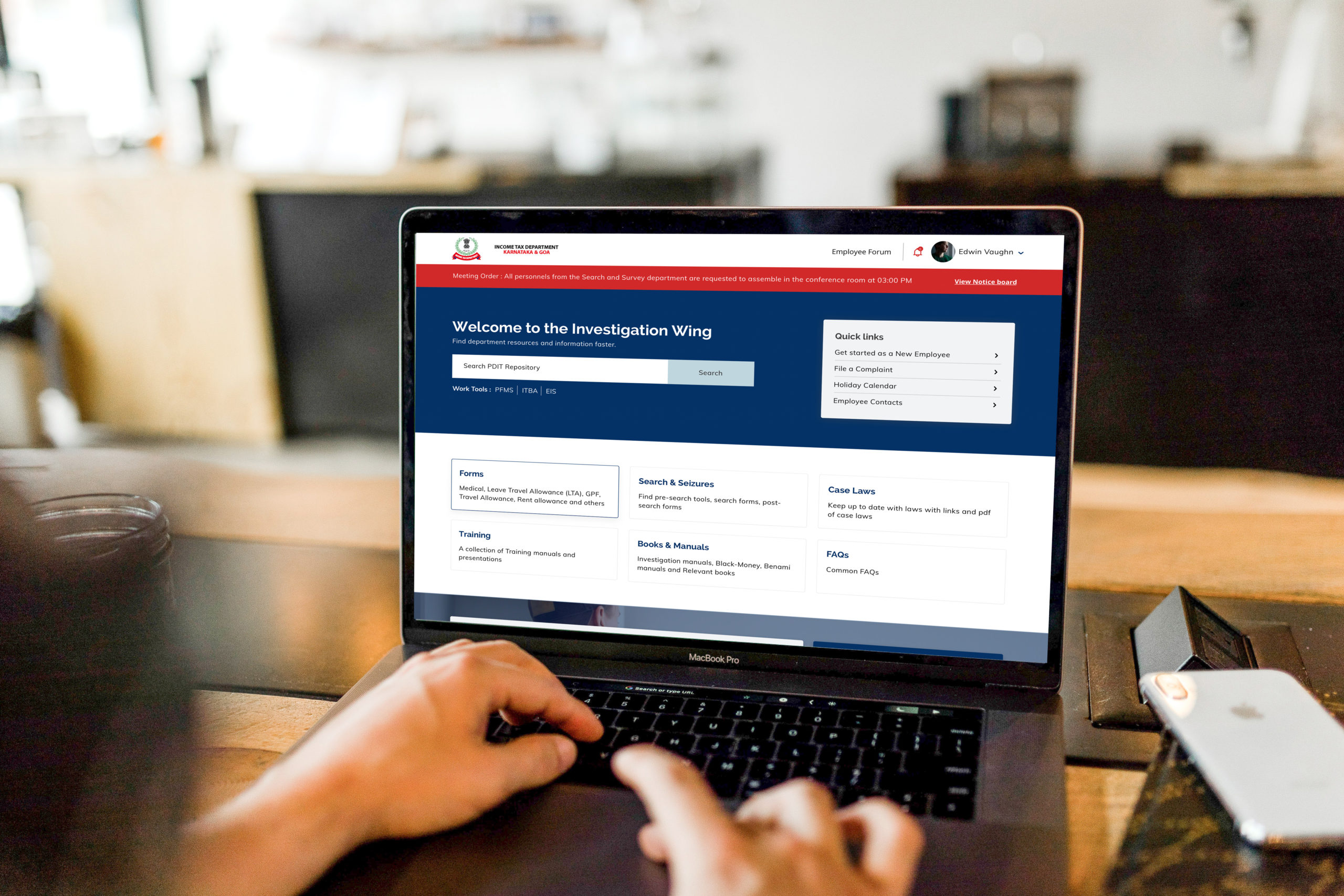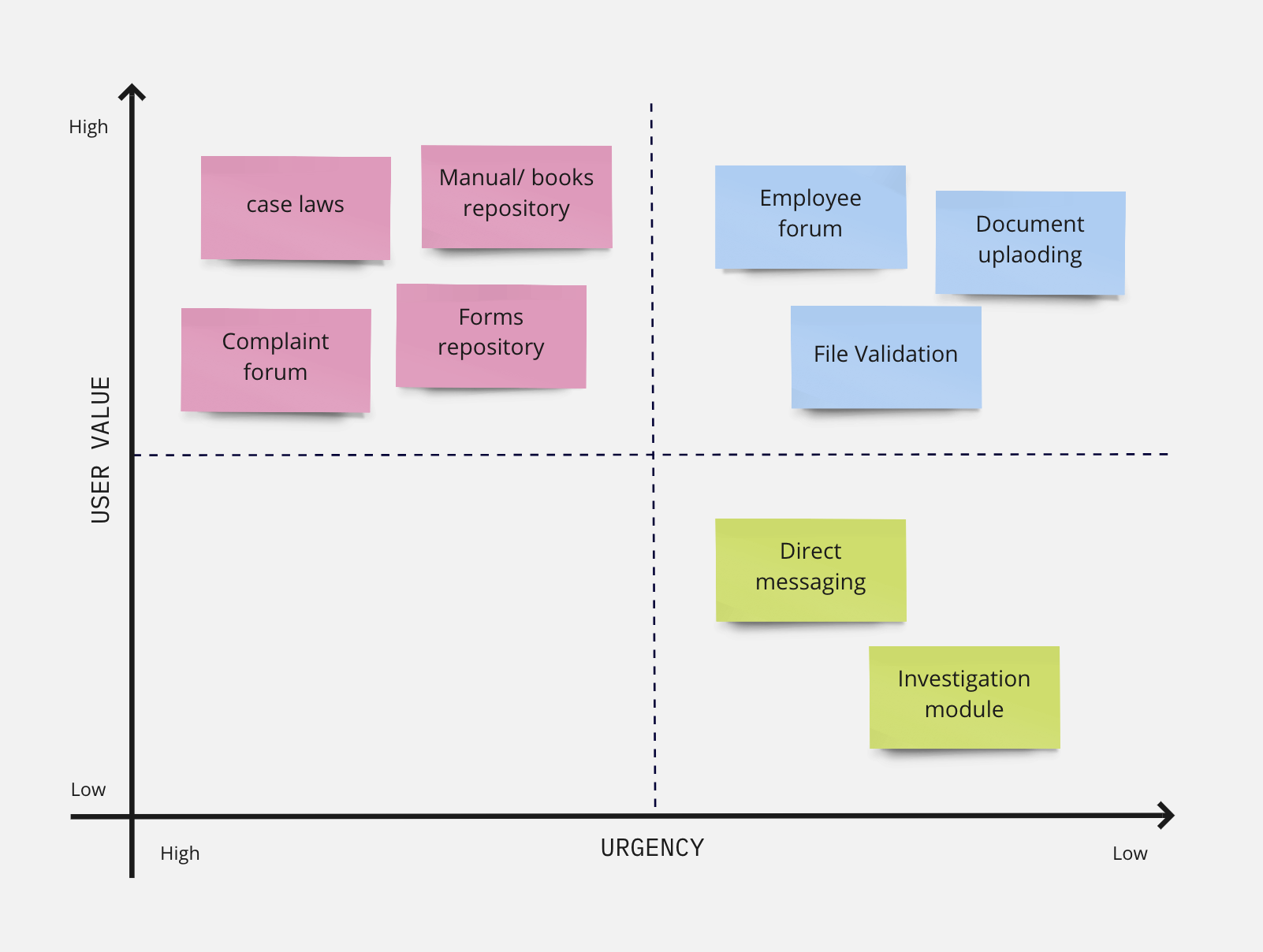User research for the Income Tax Department

The Income Tax Department of Karnataka and Goa is the revenue enforcement and collection agency for the two states.
The goal of the project was to create a centralized intranet portal for resources and communication management. A high level of security was at the core of the project due to the sensitive nature of the data and previous hacking attempts. Thus, it was decided to build it on an intranet server accessible only on the building network.
The major constraint and challenge was a strict timeline of 2 months within which to complete the research, design, and development.
YEAR
Jun 2019 - Aug 2019
SERVICES
UX Research & Design
UI direction
MY ROLE
I was responsible for creating wireframes and workflows based on interviews and insights obtained from the research.I led the UI team towards obtaining a visual direction.
Problem Statement
Investigative units within IT departments today rely on information to be passed on and carried around on paper. Activities which contribute to the development of a case – researching case laws, search and seizure announcements, documentation etc. are all manually managed, with no digital presence. This has created chains of misinformation, loss of data/files due to incomplete paper-trails, and most importantly a loss of time.
Thus, there is a strong need for a digital portal that seeks to increase efficiency within and between various units and departments.
RESEARCH 1
User & Audience Research
For the first part of our research, we developed an understanding of our user base who would be using the portal. As it was meant to serve multiple purposes, we visited every unit (spread out throughout the building) to capture the various flows.
A majority of the users were between the age of 40 and 60 years.




RESEARCH 2
Qualitative Interviews
To begin the evaluation of the problems, we conducted a series of interviews within different departments and roles as mentioned above. We gathered as much as we could from the end users to understand the challenges they face and how the portal can reduce their pain points.
Department worker
“I get multiple calls and requests in a day to get certain files and permissions. Sometimes it's from people who I have never met. I try to write them down on a paper but it’s difficult to keep a track of them and the files requested.”
IT raid officer
"During the phase of planning and implementation of a raid, there are multiple days of tedious work put in. During the raids we constantly refer multiple cases and laws along with forms to be filled out throughout. The departments are usually chaotic and getting things done is difficult and time consuming."
Senior department manager
"One of the most important factors we are constantly worried about is security. Most communication today takes place on WhatsApp, affecting our privacy. Along with that having multiple paper trails doesn't help in managing our work better. Making our repository digital is the best way forward."
RESEARCH 3
Insights
Based on the interviews, we categorized the pain points into 3 main categories.



RESEARCH 4
Ideation
Our research made the need for digitization of the department quite evident.
Once we had our main features listed, we utilized a feature prioritization matrix method to filter down what we needed to prioritize for the platform in light of the time constraints.

SOLUTION 1
Efficent work management
The portal makes it easy for any department official to collect, refer and be up-to-date on important matters – in one place. The digital repository is available solely for the investigative wing.




SOLUTION 2
Communication
The portal allows to efficiently manage documents and data for all individuals, preventing loss of time, and miscommunication. At the same time, it builds a community within the department for knowledge sharing and complaints.



Learnings & Outcomes
This being an early UX project with research, was an exciting journey into understanding the users and the extensive ways technology affects our lives, and the sustance it can bring.
- Accessibility - A few employees faced visual impairment. Here I realized the need for how the web should be equal and inclusive for all users.
- Research & Interviews - Talking to users, exposed me to the importance of the correct research method and its outcomes. Working with assumptions and validating them will help in making the product approachable for all users
32
Employees onboarded successfully
54%
Improvement in work efficency
115
Files uploaded by employees
62%
Increase in resolved complaints